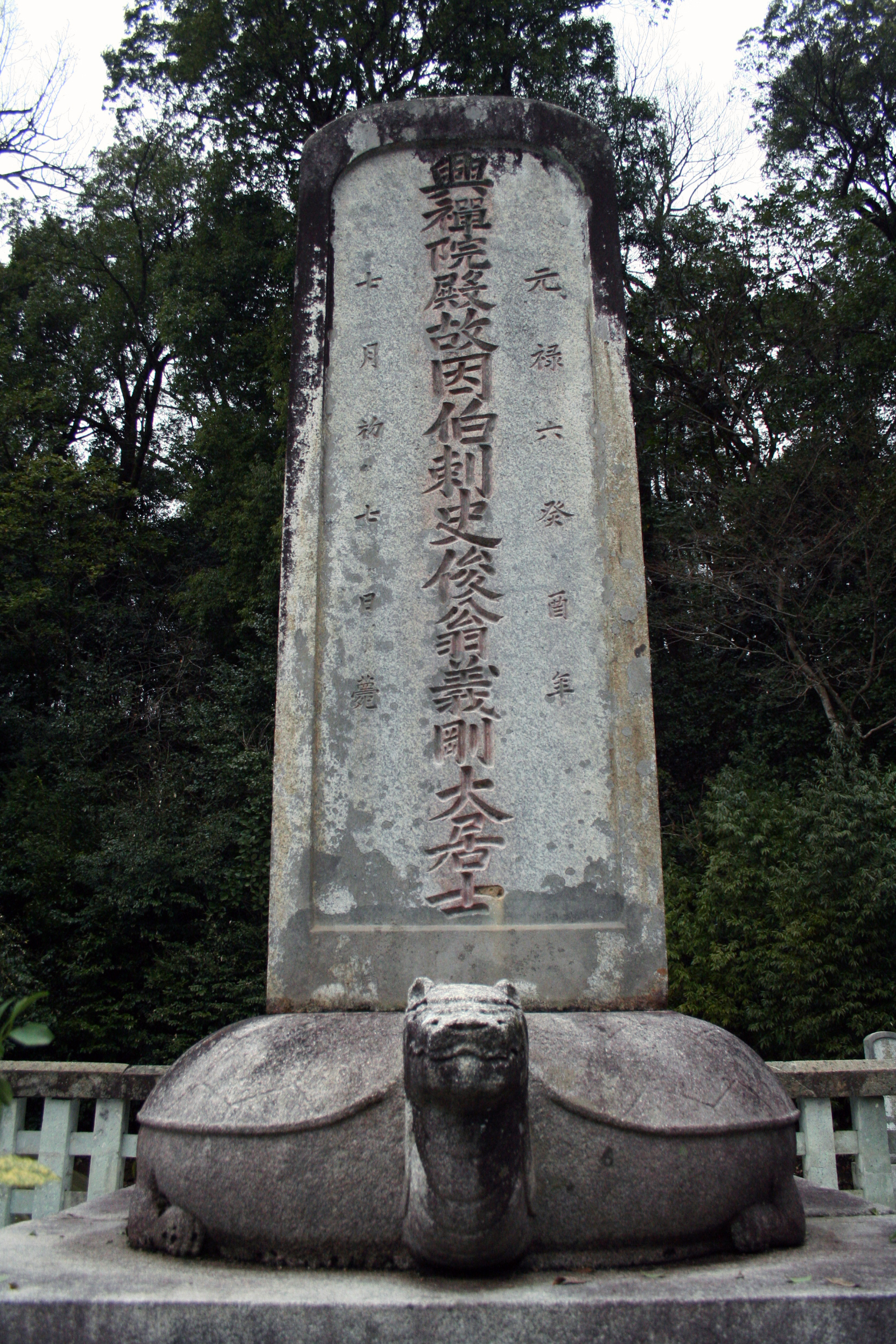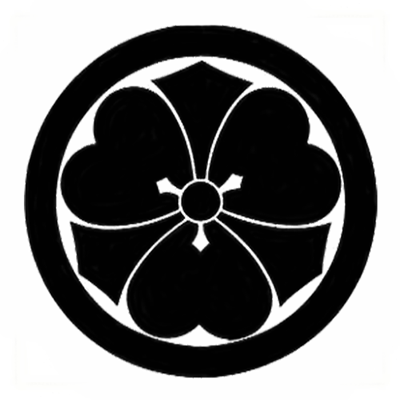|
Abe Tadaaki
was a high-ranking government official in Japan under Tokugawa Iemitsu and Ietsuna, the third and fourth Tokugawa Shōgun. As the ''daimyō'' of the Oshi Domain in modern-day Saitama Prefecture, with an income of 80,000 '' koku'' (earlier 50,000), Abe was appointed ''wakadoshiyori'' (junior councillor) in 1633,Though Frederic gives 1663 as the date for this event, Sansom gives 1633, which seems more likely given the context and the other events and actions of his life. and ''rōjū'' (Elder Councillor) shortly afterwards. Iemitsu died in 1651 and was succeeded by his ten-year-old son Ietsuna. In accordance with the custom of ''junshi'', a number of Iemitsu's closest retainers and advisors committed suicide so as to follow their lord in death; Abe did not engage in this practice, and was left, along with a handful of other high-ranking officials and advisors, to handle the affairs of government. Especially remembered for his integrity, high morals, and practical sense of good ... [...More Info...] [...Related Items...] OR: [Wikipedia] [Google] [Baidu] |
Oshi Domain
was a feudal domain under the Tokugawa shogunate of Edo period Japan, located in Musashi Province (modern-day Saitama Prefecture), Japan. It was centered on Oshi Castle in what is now part of the city of Gyōda, Saitama. History Oshi Castle was completed by Narita Akiyasu around 1479. The Narita family ruled over the area of Gyōda as retainers to the Odawara Hōjō clan. The castle made use of marshes and swamplands in its surroundings and was considered impregnable. In 1590, Toyotomi Hideyoshi dispatched his senior retainer Ishida Mitsunari with an army of 23,000 troops to seize the castle. In the Siege of Oshi, the castle’s 619 samurai and 2000 local conscripts held off numerous attacks, and the castle surrendered only after word that their overlords had been defeated at the Siege of Odawara. Afterwards, the area came under the control of Tokugawa Ieyasu, who assigned his 4th son, Matsudaira Tadayoshi to a 100,000 ''koku'' domain. However, as Tadayasu was only 11 years o ... [...More Info...] [...Related Items...] OR: [Wikipedia] [Google] [Baidu] |
Coup D'état
A coup d'état (; French for 'stroke of state'), also known as a coup or overthrow, is a seizure and removal of a government and its powers. Typically, it is an illegal seizure of power by a political faction, politician, cult, rebel group, military, or a dictator. Many scholars consider a coup successful when the usurpers seize and hold power for at least seven days. Etymology The term comes from French ''coup d'État'', literally meaning a 'stroke of state' or 'blow of state'. In French, the word ''État'' () is capitalized when it denotes a sovereign political entity. Although the concept of a coup d'état has featured in politics since antiquity, the phrase is of relatively recent coinage.Julius Caesar's civil war, 5 January 49 BC. It did not appear within an English text before the 19th century except when used in the translation of a French source, there being no simple phrase in English to convey the contextualized idea of a 'knockout blow to the existing administratio ... [...More Info...] [...Related Items...] OR: [Wikipedia] [Google] [Baidu] |
1602 Births
Sixteen or 16 may refer to: *16 (number), the natural number following 15 and preceding 17 *one of the years 16 BC, AD 16, 1916, 2016 Films * '' Pathinaaru'' or ''Sixteen'', a 2010 Tamil film * ''Sixteen'' (1943 film), a 1943 Argentine film directed by Carlos Hugo Christensen * ''Sixteen'' (2013 Indian film), a 2013 Hindi film * ''Sixteen'' (2013 British film), a 2013 British film by director Rob Brown Music *The Sixteen, an English choir *16 (band), a sludge metal band * Sixteen (Polish band), a Polish band Albums * ''16'' (Robin album), a 2014 album by Robin * 16 (Madhouse album), a 1987 album by Madhouse * ''Sixteen'' (album), a 1983 album by Stacy Lattisaw *''Sixteen'' , a 2005 album by Shook Ones * ''16'', a 2020 album by Wejdene Songs * "16" (Sneaky Sound System song), 2009 * "Sixteen" (Thomas Rhett song), 2017 * "Sixteen" (Ellie Goulding song), 2019 *"16", by Craig David from ''Following My Intuition'', 2016 *"16", by Green Day from ''39/Smooth'', 1990 *"16", by H ... [...More Info...] [...Related Items...] OR: [Wikipedia] [Google] [Baidu] |
Daimyo
were powerful Japanese magnates, feudal lords who, from the 10th century to the early Meiji period in the middle 19th century, ruled most of Japan from their vast, hereditary land holdings. They were subordinate to the shogun and nominally to the emperor and the '' kuge''. In the term, means 'large', and stands for , meaning 'private land'. From the ''shugo'' of the Muromachi period through the Sengoku to the ''daimyo'' of the Edo period, the rank had a long and varied history. The backgrounds of ''daimyo'' also varied considerably; while some ''daimyo'' clans, notably the Mōri, Shimazu and Hosokawa, were cadet branches of the Imperial family or were descended from the ''kuge'', other ''daimyo'' were promoted from the ranks of the samurai, notably during the Edo period. ''Daimyo'' often hired samurai to guard their land, and they paid the samurai in land or food as relatively few could afford to pay samurai in money. The ''daimyo'' era ended soon after the Meiji Resto ... [...More Info...] [...Related Items...] OR: [Wikipedia] [Google] [Baidu] |
Rōjū
The , usually translated as '' Elder'', was one of the highest-ranking government posts under the Tokugawa shogunate of Edo period Japan. The term refers either to individual Elders, or to the Council of Elders as a whole; under the first two ''shōguns'', there were only two ''Rōjū''. The number was then increased to five, and later reduced to four. The ''Rōjū'' were appointed from the ranks of the ''fudai daimyōs'' with domains of between 25,000 and 50,000 ''koku''. Duties The ''Rōjū'' had a number of responsibilities, most clearly delineated in the 1634 ordinance that reorganized the government and created a number of new posts: :#Relations with the Emperor, the Court, and the Prince-Abbots. :#Supervision of those ''daimyō'' who controlled lands worth at least 10,000 ''koku''. :#Managing the forms taken by official documents in official communications. :#Supervision of the internal affairs of the Shogun's domains. :#Coinage, public works, and enfiefment. :#Governmental ... [...More Info...] [...Related Items...] OR: [Wikipedia] [Google] [Baidu] |
Abe Masayoshi
was a Japanese ''daimyō'' of the mid-Edo period, who ruled the Oshi Domain. Masayoshi served as ''Kyoto Shoshidai The was an important administrative and political office in the Tokugawa shogunate. The office was the personal representative of the military dictators Oda Nobunaga and Toyotomi Hideyoshi in Kyoto, the seat of the Japanese Emperor, and was ado ...''. , - 1769 births 1808 deaths Daimyo Kyoto Shoshidai {{Daimyo-stub ... [...More Info...] [...Related Items...] OR: [Wikipedia] [Google] [Baidu] |
Miura Masatsugu
Miura may refer to: Places *Miura, Kanagawa *Miurakaigan Station *Miura District, Kanagawa *Miura Peninsula * Ganadería Miura, the home of the Miura fighting bull line People * Miura (surname) *Miura clan, Japanese descended clan of the Taira *Miura Anjin, honorific title of William Adams *Miura Gorō (1847-1926), lieutenant general in the Imperial Japanese Army *Miura Haruma (1990-2020), Japanese actor, singer and model *Miura Kentaro (1966-2021), Japanese manga artist and author Characters *Miura Haru from ''Reborn!'' *Miura Hayasaka from ''Yotsuba&!'' *Azusa Miura, a character from ''The Idolmaster'' *Naoto Miura, a character from Clockwork Planet Other *Miura map fold *Miura bulls, the famously ferocious bullfighting stock bred by the ''Ganadería Miura'' *The Lamborghini Miura, a sports car named for the bull breeder *"Miura", a song from the self-titled album ''Metro Area'' See also *Miguel Mihura Miguel Mihura Santos (21 July 1905, in Madrid – 27 October ... [...More Info...] [...Related Items...] OR: [Wikipedia] [Google] [Baidu] |
Mibu Domain
was a feudal domain under the Tokugawa shogunate of Edo period Japan, located in Tsuga District of Shimotsuke Province (modern-day Tochigi Prefecture), Japan. It was centered on Mibu Castle in what is now part of the town of Mibu, Tochigi. Mibu was ruled through much of its history by a branch of the '' fudai'' Torii clan. History The Mibu clan, which had ruled this area since the Muromachi period was destroyed at the Battle of Odawara in 1590, and their lands came under the control of the Yūki clan. After the Battle of Sekigahara, Tokugawa Ieyasu assigned a 19,000 ''koku'' holding in this area to Hineno Yoshiaki, formerly of Takashima Domain in Shinano Province in 1602. Hineno was instrumental in the construction of the Nikkō Tōshō-gū complex, and was rewarded for his efforts in 1634 by a transfer to Funai Domain (20,000 ''koku''). Mibu was assigned to Abe Tadaaki, who has served as a ''Rōjū'' to ''Shōgun'' Tokugawa Iemitsu, with revenues raised to 25,000 ''koku''. He ... [...More Info...] [...Related Items...] OR: [Wikipedia] [Google] [Baidu] |
Genroku
was a after Jōkyō and before Hōei. The Genroku period spanned the years from the ninth month of 1688 to the third month of 1704. The reigning emperor was .Titsingh, Isaac. (1834). ''Annales des empereurs du japon'', p. 415. The period was known for its peace and prosperity, as the previous hundred years of peace and seclusion in Japan had created relative economic stability. The arts and architecture flourished. There were unanticipated consequences when the shogunate debased the quality of coins as a strategy for financing the appearance of continuing Genroku affluence. This strategic miscalculation caused abrupt inflation. Then, in an effort to solve the ensuing crisis, the introduced what were called the Kyōhō Reforms. Change of era The was 1688. The new era name was created to mark the beginning of the reign of Higashiyama. The previous era ended and the new one commenced in Jōkyō 5, on the 30th day of the 9th month. A sense of optimism is suggested in the era ... [...More Info...] [...Related Items...] OR: [Wikipedia] [Google] [Baidu] |
Sakai Tadakiyo
, also known as Uta-no-kami, Bodart-Bailey, Beatrice. (1999) ''Kaempfer's Japan: Tokugawa Culture Observed,'' p. 442./ref> was a ''daimyō'' (feudal lord) in Kōzuke Province, and a high-ranking government advisor and official in the Tokugawa shogunate of Japan. Sansom, George Bailey. (1963) ''A History of Japan: 1615-1867,'' pp. 54 The Sakai were identified as one of the '' fudai'' or insider ''daimyō'' clans which were hereditary vassals or allies of the Tokugawa clan,Alpert, Georges. (1888) ''Ancien Japon,'' pp. 76-77 in contrast with the '' tozama'' or outsider clans. Sakai clan genealogy Tadakiyo was part of the senior branch of the Sakai. The ''fudai'' Sakai clan originated in 14th century Mikawa Province.Appert p. 76 The Sakai claim descent from Minamoto Arichika. Arichika had two sons: one of them, Yasuchika, took the name Matsudaira; and the other son, Chikauji, took the name Sakai — and this samurai ancestor is the progenitor of this clan's name. Papinot, Edmond. ( ... [...More Info...] [...Related Items...] OR: [Wikipedia] [Google] [Baidu] |
Tokyo
Tokyo (; ja, 東京, , ), officially the Tokyo Metropolis ( ja, 東京都, label=none, ), is the capital and largest city of Japan. Formerly known as Edo, its metropolitan area () is the most populous in the world, with an estimated 37.468 million residents ; the city proper has a population of 13.99 million people. Located at the head of Tokyo Bay, the prefecture forms part of the Kantō region on the central coast of Honshu, Japan's largest island. Tokyo serves as Japan's economic center and is the seat of both the Japanese government and the Emperor of Japan. Originally a fishing village named Edo, the city became politically prominent in 1603, when it became the seat of the Tokugawa shogunate. By the mid-18th century, Edo was one of the most populous cities in the world with a population of over one million people. Following the Meiji Restoration of 1868, the imperial capital in Kyoto was moved to Edo, which was renamed "Tokyo" (). Tokyo was devastate ... [...More Info...] [...Related Items...] OR: [Wikipedia] [Google] [Baidu] |




